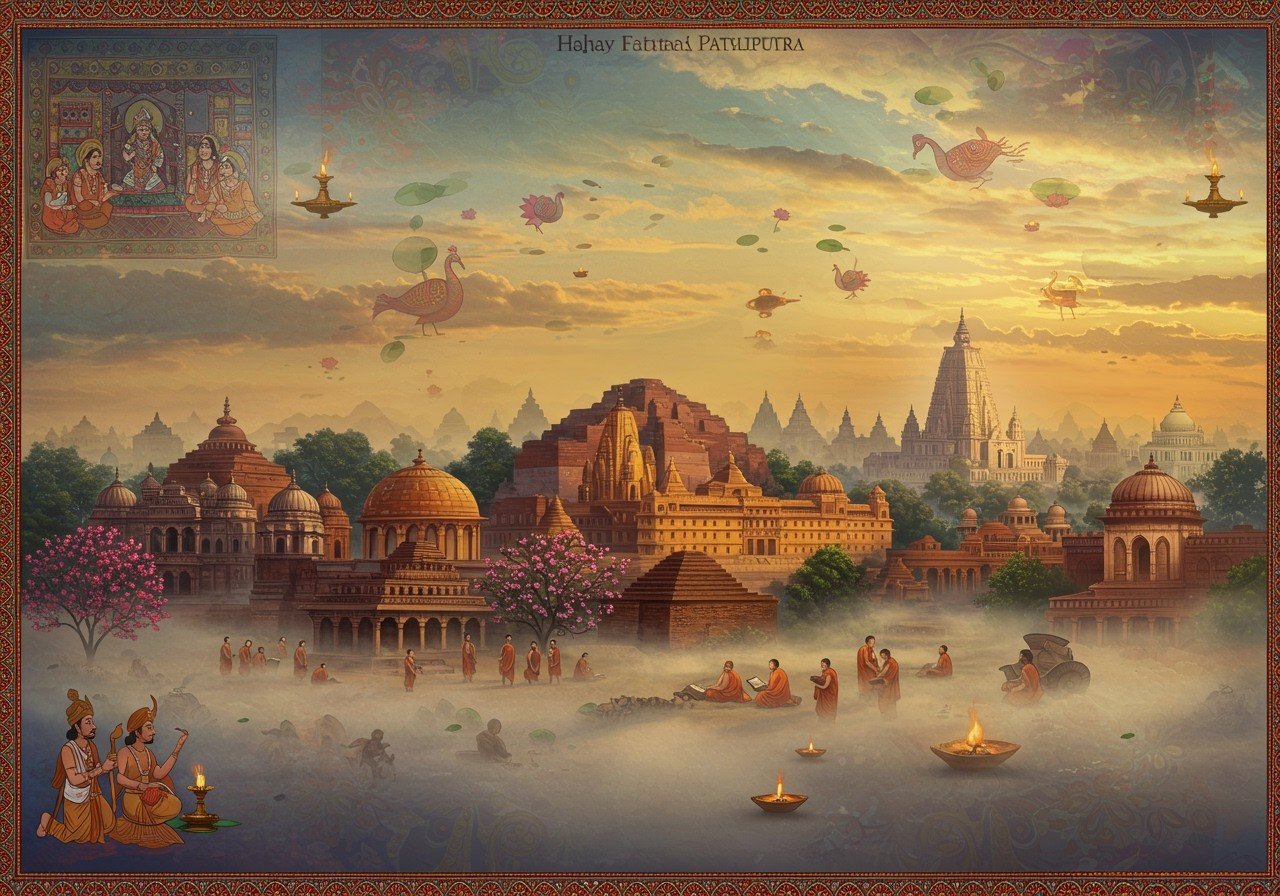
Bihar, located in eastern India, holds a captivating history, spanning from the Neolithic age to the present day. Divided into three distinct regions – Magadha, Mithila, and Bhojpur – Bihar played a pivotal role in shaping ancient and classical India. It witnessed the rise and fall of powerful empires, the birth of significant religions, and contributed immensely to the nation’s cultural heritage. Let’s embark on a journey through Bihar’s fascinating past.
Ancient Bihar: The Cradle of Civilization
Ancient Bihar witnessed the rise of the Magadha kingdom, a powerful empire that significantly influenced the spread of Buddhism and Jainism. Siddhartha Gautama, who later became known as Buddha, achieved enlightenment in Bodh Gaya, Bihar. Mahavira, the founder of Jainism, was also born in this historically significant state.
Emperor Ashoka, a prominent ruler of the Maurya Empire, embraced Buddhism after the Kalinga War and played a pivotal role in its global propagation. His edicts, inscribed on pillars and rocks, reflect his commitment to dharma and non-violence.
Bihar was a hub of learning, housing renowned ancient universities like Nalanda and Vikramashila. These institutions attracted scholars from across the globe, fostering intellectual and cultural exchange.
Explore the Leaning Temple of Huma and other architectural marvels
Medieval Bihar: A Blend of Dynasties and Influences
The medieval period saw Bihar flourish under various dynasties, including the Guptas, considered the “Golden Age” of India. This era witnessed remarkable advancements in art, science, literature, and mathematics.
The Pala dynasty, known for its patronage of Buddhism, established numerous monasteries and educational centers, further strengthening Bihar’s position as a center of religious and intellectual pursuits.
Bihar also played a significant role during the Delhi Sultanate and Mughal Empire. Sher Shah Suri, born in Bihar, implemented notable administrative reforms and commissioned the construction of the Grand Trunk Road, a major infrastructural achievement.
Discover other sacred sites and spiritual journeys in India
Colonial Era and the Struggle for Independence
The arrival of the British East India Company marked the beginning of the colonial era in Bihar. While British rule brought administrative changes, it also led to the exploitation of resources.
Bihar played a crucial role in India’s fight for independence. Prominent freedom fighters like Rajendra Prasad, India’s first President, and Jayaprakash Narayan hailed from Bihar. The Champaran Satyagraha, led by Mahatma Gandhi, was a landmark event in the Indian independence movement, highlighting the plight of indigo farmers in Bihar.
Learn about the Baijnath Temple and its significance
Post-Independence Bihar: Development and Progress
Post-independence, Bihar focused on agricultural advancements, industrial growth, and educational improvements. Efforts were made to modernize farming practices, establish industries, and expand access to education.
Bihar’s Cultural Tapestry: Festivals, Traditions, and Arts
Bihar’s cultural heritage is rich and diverse. Chhath Puja, a major festival dedicated to the Sun God, is celebrated with great fervor. The state is known for its vibrant folk dances and music, including Bhojpuri music and Jhijhiya dance. Traditional crafts like Madhubani painting and Sikki grass weaving showcase the artistic skills of the region.
Poojn.in offers a wide selection of products to support your observance of Bihar’s cultural and religious traditions. From puja items to traditional crafts, explore our collection to enhance your spiritual journey.
Discover Talmakhana seeds and other puja essentials at Poojn.in
Find Suhaga (Borax) and other essential items for your puja needs
Historical Sites and Landmarks: Exploring Bihar’s Past
Bihar is home to numerous historical sites and landmarks that offer glimpses into its glorious past. Bodh Gaya, the place of Buddha’s enlightenment, is a major pilgrimage site. Rajgir and Vaishali hold significance for both Jains and Buddhists. The ruins of Nalanda University stand as a testament to its ancient legacy as a center of learning. Patna, the capital city, boasts historical monuments like the Golghar and Patna Sahib Gurudwara.
Conclusion: Bihar’s Enduring Legacy
Bihar’s history is a testament to its resilience, cultural richness, and enduring legacy. From ancient empires to modern progress, the state has played a significant role in shaping India’s identity. Exploring Bihar’s past offers a deeper understanding of its present and a glimpse into its promising future.


